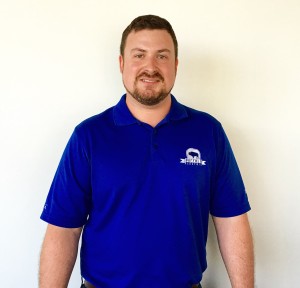Many companies, including us, are experiencing a shift towards adapting to and implementing technology resources in their every day work culture and operations. While many industries are a step ahead in technology innovation, the electrical supply industry has found seasoned veterans and millennial employees are having to identify transitional plans to bridge technology in training, internal communications and client relations.
Buffalo Electric’s Industrial Sales Manager Brad Gravitt spoke with the Birmingham Business Journal about how our team has overcome these generational challenges by proactively educating our team on working together to establish best practices, particularly in implementing helpful technological standards that all generations can appreciate.
How to bridge the generational tech divide in the workplace
By: Alan Alexander
In my time as a technology reporter, I’ve heard many executive say how every company nowadays is a technology company.
Businesses rely on a variety of IT services to keep their operations running smoothly, and with constantly-changing trends and new tools seemingly introduced each month, staying up to date on the latest business tech solutions can be a challenge.
That’s especially true if part of your company’s workforce is older and takes takes longer to adjust to new technology. The unfamiliarity with various software, email and other processing tools can be common in small-to-medium sized businesses with a mix of generations ranging from millennials to baby boomers.
And that’s the situation Brad Gravitt found at Buffalo Electric Company when he started as industrial sales manager two years ago. Gravitt has been working to bridge the technology gap between his younger sales coworkers and those with 20 or more years of experience.
He said Buffalo Electric operates in an industry dominated by seasoned employees, many of which still relied on antiquated phone systems, beepers and fax machines. Implementing new technology and having older workers adapt to these new solutions with limited push back became an issue.
“We tried bringing in online Microsoft training classes before making any conversions, but it didn’t work,” Gravitt said. “So, we met one-on-one with the employees to find out the main issues, spent one month categorizing those, and then formed a plan to build their skills to be compatible with the new software.”
The main issue was getting the employees to trust the software to do it’s job, Gravitt said.
“As a manager, you should focus on small wins first before the bigger issue,” he said. “Show that it works. Take who it affects the most, and make sure you emphasize that these changes aren’t being made because of them, but for the future of the business. It’s not a personal reflection of their performance, and you have to convince them to buy in to it.”
Gravitt said getting those employees up-to-speed made significant improvements, especially as the company has shifted its focus to e-commerce and Amazon Business.
“We’ve done well so far and have opened a new area of business, are adding employees and growing at a steady rate,” he said.

